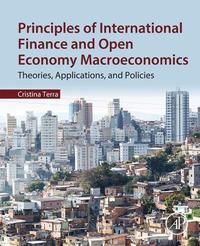Exercise 4 Exchange rate policy, in general, has an impact on inflation. Consider the economic model developed
Question:
Exercise 4 Exchange rate policy, in general, has an impact on inflation. Consider the economic model developed in Section 11.1, particularly the case that incorporates the distributive effects of inflation on individual welfare.
a. Explain how exchange rate depreciation affects domestic prices, generating inflation, and how inflation, in turn, impacts the real exchange rate. Also explain how inflation reduces individual welfare.
b. How does the exchange rate in period t 5 0, i.e., Q0, affect individual welfare? If the government could choose Q0, what would be the chosen value? What is the threshold for the weight attributed to the nontradables sector for the government to prefer a more appreciated exchange rate?
c. Now assume that the government only chooses the real exchange rate for period t 5 1. In this case, how does the intertemporal discount rate for individuals, i.e., β, affect the cut-off point, γ, which serves as a reference to define the real exchange rate level? Explain your answer, relating it to the economic and political elements that can affect the value of β.
d. Now assume that the government chooses the trajectory for the real exchange rate in all periods, that is, that the government chooses Qt; t 5 1; 2. Find the exchange rate chosen by the government, assuming that the weight attributed to individuals in the nontradables sector is given by γp. Explain for your answer.
e. Compare the results obtained in the previous item with those presented throughout the text of Section 11.1, that is, evaluate the difference between choosing the real exchange rate alone at each point in time and choosing the whole exchange rate trajectory at once.
Explain your answer.
Step by Step Answer:

Principles Of International Finance And Open Economy Macroeconomics Theories Applications And Policies
ISBN: 9780128022979
1st Edition
Authors: Cristina Terra






